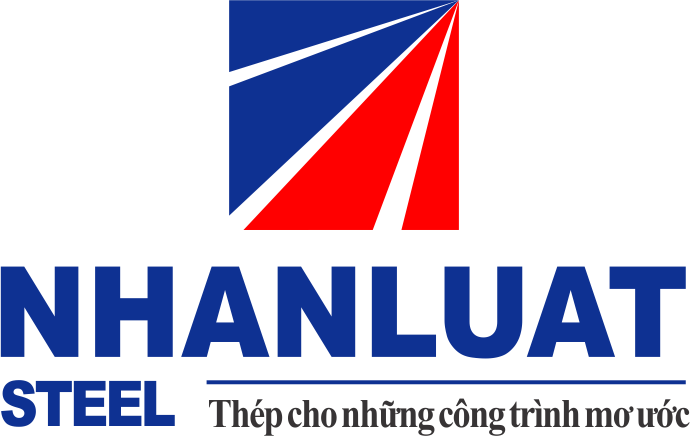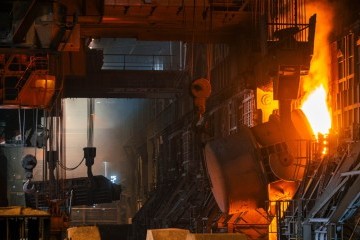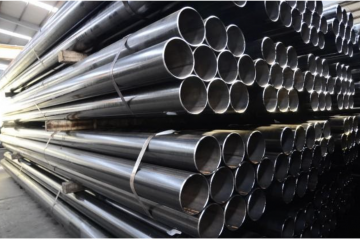China's economic support for 2024 runs into difficulties. Steel futures markets in China face downward pressure on prices after the country's annual Central Economic Work Conference did not reveal any major fiscal or monetary policy support for 2024 , especially for the domestic real estate sector, which is an important economic driver as well as the largest consumer of steel.
Market participants said without a major stimulus push, China's steel demand is unlikely to improve significantly in 2024, especially from the real estate sector. Without such measures, the Chinese steel market will continue to be under pressure amid rising output and sluggish domestic demand next year.
At the conference, experts admitted that China still has to overcome many difficulties and challenges in 2024. "Lack of effective demand, excess capacity in some areas, some potential risks and problems." congestion, congestion in domestic circulation, as well as the increasing complexity and uncertainty of the external environment” were highlighted as some of the challenges during this period.
To address these barriers, China said it will continue to implement proactive fiscal policy and prudent monetary policy in 2024.
The real estate sector is still limping along
Steel market sources say the efforts of the banking system alone are unlikely to help the real estate sector escape the debt crisis, because the more cash-strapped developers are, the less able banks are to lend them a loan. Meanwhile, the promotion of secure housing and the renovation of urban villages have not been enough to compensate for the general decline in home purchases.
China's real estate sector accounts for about 30% of the country's steel consumption and therefore has a decisive influence on steel demand.
Due to a slump in the real estate sector, China's rebar output, an indicator of the construction steel market, fell 1.2% year-on-year from January to October, after falling 9.5%. % compared to the same period in 2022.
HRC/CRC
The market went from stable to more solid
In the US, hot-rolled coil prices were stable as market sources saw reduced spot supply supporting rising mill offers.
US HRC prices were assessed at $1,100/mt on an ex-works basis on December 8, unchanged from the previous assessment.
In Europe, HRC buyers do not want to accumulate inventory and limit purchasing volumes due to uncertainties about short-term price fluctuations in the context of no real demand recovery.
Domestic HRC prices in Northwest Europe were at Eur690/ton ($743) ex-Ruhr on December 8, up Eur5 from the previous session.
Türkiye imported 342,700 tons of HRC in October, down 7% year-on-year, with most of these imports from Japan, South Korea and China.
In Asia, the HRC market was more stable thanks to expectations of favorable economic policies in China while trading slowed due to strong price fluctuations.
In Shanghai, spot price HRC Q235 5.75 mm was assessed at 4,080 Yuan/ton ($568) ex-Shanghai on December 8, up 100 Yuan/ton from last week, including price tax increased value.
HRC SS400 3 mm thick price was at 560 USD/ton FOB China on December 8, up 6 USD/ton from last week. Similar HRC grade increased 8 USD/ton compared to last week at 569 USD/ton CFR Southeast Asia.
Rebar products
Scrap pushes up Turkish steel rebar prices
Türkiye's rebar export market is more solid due to escalating scrap import prices.
Türkiye's export steel rebar price was assessed at 605 USD/ton FOB on December 8, up 5 USD/ton from the previous session.
Similarly, domestic steel rebar prices in Northwest Europe increased because mills increased their offers in the context of high costs.
Northwest European rebar prices are estimated to increase by Eur15/ton ($16) compared to last week at Eur620/ton ex-works on December 6.
However, demand is weak as buyers often hesitate to place new orders at the end of the year, and mills are focusing on deliveries in January.
In the US, the domestic steel rebar market is stable. Rebar prices in the US Southeast were at $825-$840/ton on December 8, unchanged from the previous week, while rebar prices in the US Midwest held at $835-$845/ton.
In Asia, the rebar market is quite active. Market expectations recovered as China pledged to stimulate domestic demand and economic recovery.
The price of grade 500 BS4449 16-32 mm rebar was at 561 USD/tonne CFR Southeast Asia on December 8, up 4 USD/ton from the previous day, while 16-40 mm diameter BS500B rebar exported. China's exports increased by 3 USD/ton at 560 USD/ton FOB.
Steel plate
Steel mills seek higher prices
The steel plate market in the US is steady as sources report market uncertainty as 2023 comes to a close.
Steel plate prices were assessed at $1,430/mt on December 6, unchanged from the previous assessment and marking the sixth consecutive week of unchanged prices.
In 2023, steel plate prices skyrocketed relative to most steel products, causing a major decoupling from hot-rolled steel coils.
In Europe, regional steelmakers are seeking higher prices for heavy steel plates despite weak demand.
Domestic heavy steel plate prices in Southern Europe increased by 15 Eur/ton ($16) over the previous week to 750 Eur/ton ex-works Italy on December 8.
Although projects showed good steel plate demand, major distributors avoided buying larger volumes as they restocked when steel plate prices were lower in the first half of the fourth quarter.
Asian steel plate market increased as some buying activity was observed at higher levels while mills kept offers stable.
SS400 steel plate price 12-20 mm thick is at 558 USD/ton FOB China, up 2 USD/ton compared to the previous week as of December 6. Steel plate price of the same type 12-25 mm thick is at 571 USD/ton CFR Korea, increased by 2 USD/ton in the same period.
China's Q235 grade material price was at 4,020 yuan/ton ($565) ex-works in Shanghai on December 6, down 10 yuan/ton from the previous week, including value-added tax.
Amid lower prices, a Shanghai-based trader said sales volumes and prices were quite stable in the Chinese domestic market.
Scrap
Scrap tends to be higher
Import prices of containerized scrap in India increased in the context of a stable Turkish scrap market.
The price of imported containerized scrap was at 422.50 USD/ton CFR Nhava Sheva on December 8, an increase of 16 USD compared to the previous session. Operations were said to be constrained by weak sales of finished steel products.
Turkey's deep sea imported scrap prices are stable as a series of orders from the US, Baltic and European regions have confirmed the current level.
Turkey's 1/2 (80:20) premium heavy molten scrap import price was at $425.75/tonne CFR on December 8, down 25 cents from the previous session.
In Asia, CFR Taiwan scrap import prices are stronger amid limited supply and a more competitive import market, while mills continue to respond by skipping deals or holding bids are low.
The price of 1/2 containerized melted scrap 80:20 CFR Taiwan increased $5/ton compared to last week at $383/ton CFR on December 8.
Australian metallurgical coal is stable with sparse activity
Asian metallurgical coal market stabilizes amid thin liquidity. Premium coking coal prices were unchanged from the previous session at $335.25/mt FOB Australia on December 12, while CFR prices delivered in China remained at $330/mt CFR China.
A Chinese trader said steel product prices have increased sharply so factories may continue to restock before the Lunar New Year, which could make current coking coal prices well supported.
Asian iron ore steady amid inventory replenishment
The seaborne iron ore market is more stable amid restocking activities for January shipments.
The 62% Fe iron ore index was at $138.05/dry ton CFR North China on December 12, up $1.20/dry ton from the previous session.




